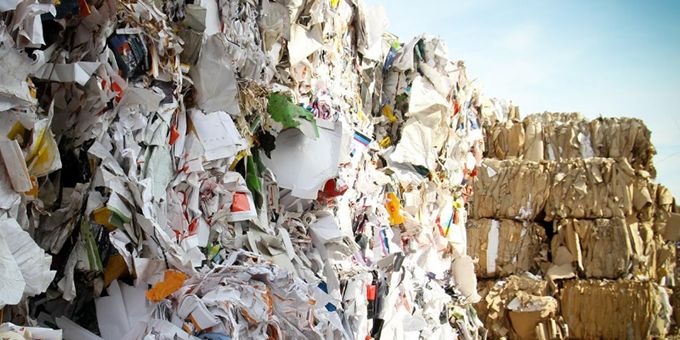If robotics technology is going to keep oceans and rivers clean, it will need human help. Humans and robots working together is essential in order to effectively manage the recycling crisis.
 Battling The Recycling Crisis With Robotics
Battling The Recycling Crisis With Robotics

Article from | Jori Hamilton
You probably won’t see them marching in any demonstrations or holding up “save the planet” signs, but nonetheless, robotics greatly help the environment via the important role they play in the recycling industry. Currently, the United States finds itself in the throes of a recycling crisis. Because China has stopped accepting most of the country’s scrap plastic and cardboard, many cities and towns are now drowning in garbage.
On average, each American throws out about 2,555 pounds of trash every year, according to Scientific American contributor Jeremy Hsu. Despite an estimated 75% of it being recyclable, the majority ends up in landfills or incinerators due to an ineffectual single-stream recycling approach, until now. Robotics are stepping in to pick up the slack and have quickly become an integral part of the recycling process. Technological advancements will cement their importance, but that’s not to say robotics alone can solve the recycling crisis.
If robotics technology is going to keep oceans and rivers clean, it will need human help. Humans and robots working together is essential in order to effectively manage the recycling crisis.
Robotics Role In The Recycling Crisis
It all starts with America’s approach to recycling. Contrary to the majority of other industrialized countries, the U.S. has adopted a single-stream recycling approach. This system allows people to toss plastic, glass, metals, and paper into the same collection bin.
On one hand, this approach leads to high recycling rates, but on the other, it worsens contamination. In recent years, Americans' bad habit of submitting non-recyclable trash has caught up with them. Due to contamination problems, China, which has historically recycled the bulk of U.S. waste, stopped accepting the country’s scrap plastic and cardboard. With a surplus of waste now in the U.S., recycling costs are skyrocketing. Many cities and towns can’t afford to keep their recycling programs, so, unfortunately, more trash is winding up in landfills and incinerators.
To help solve the problem, AI-assisted robots are taking their place on the frontlines of the recycling crisis. Using cameras and computer systems, they are able to recognize particular items advancing on the conveyor belts. When the robot “sees” recyclable items like cans, glass or plastic containers, its arm reaches out to remove the item and places it into the proper bin.
Considering estimates that suggest that 20 to 25% of submitted items are non-recyclable trash, this is no small feat. By sorting and analyzing trash, robotics play a vital role in battling the recycling crisis.
How Robotics Became Essential
Even before the current crisis, the recycling industry demonstrated a need for robotics. You might expect that sorting trash is a dirty job, but it’s also very dangerous. According to the Bureau of Labor Statistics, recycling workers had the fifth-highest fatality rate of the dozens of jobs the BLS analyzed in 2014. That year, its fatality rate was 20.8 deaths per 100,000 full-time workers.
Why is recycling so dangerous? While working in the plants, employees often have to physically handle the majority of scrap as they sort it. This necessary practice exposes them to sharp objects, toxins, and explosives.
With that in mind, it’s no wonder recycling companies like Waste Management have admitted to having trouble finding and keeping workers. The industry is a prime candidate for automation. U.S. companies and researchers are developing and improving AI-assisted robotics that will work beside humans in processing plants. In addition to working twice as fast and improving quality control, robots will reduce the risks that human employees face in recycling plants.
Humans Must Do Their Part
While robots are doing a great deal to battle the recycling crisis, technology alone can’t win the fight. Even as robots take on more work, humans have an important part to play in ensuring the recycling process runs smoothly.
Researchers, like those at the Worcester Polytechnic Institute, are working to develop sensors that will improve the robots’ ability to sort plastic, paper, and metal. The study received $2.5 million to work on robots that will help recycling center workers sort waste in a “safer, cleaner, and more profitable manner,” but the technology isn’t there quite yet.
Until it is, it’s imperative that humans take greater care with how they recycle. People should understand the basics of recycling and avoid adding items that could impede the process. For example, Christmas lights and plastic bags could confuse the robots working the line and damage the recycling processors.
Whether you’re at home or run a business, you should practice efficient recycling procedures. When you have a busy schedule, it’s easy to forget about sustainable practices, but embracing environmental awareness when running a business or managing a household greatly reduces costs.
Older recycling facilities, in particular, need customers’ cooperation. As these companies move to invest in new technology, customers can help by paying attention to what, exactly, it is they are attempting to recycle.
Changing humanity’s wasteful tendencies won’t be easy, but fortunately, robotics technology is picking up the slack to help manage the recycling crisis. From making recycling centers safer for human workers to sorting waste with speed and efficiency, robotics’ technological advancements are giving humans hope and support in battling the recycling crisis.
The content & opinions in this article are the author’s and do not necessarily represent the views of RoboticsTomorrow
Featured Product

